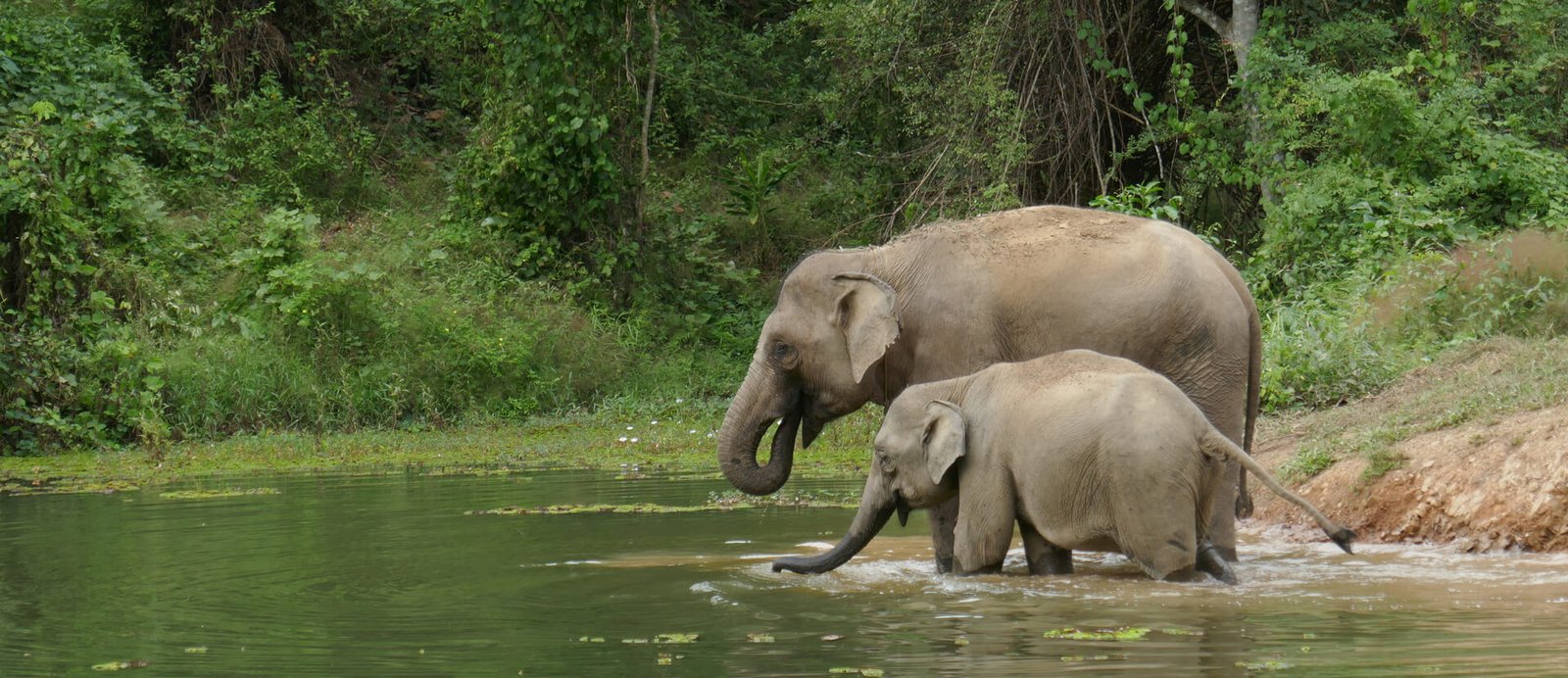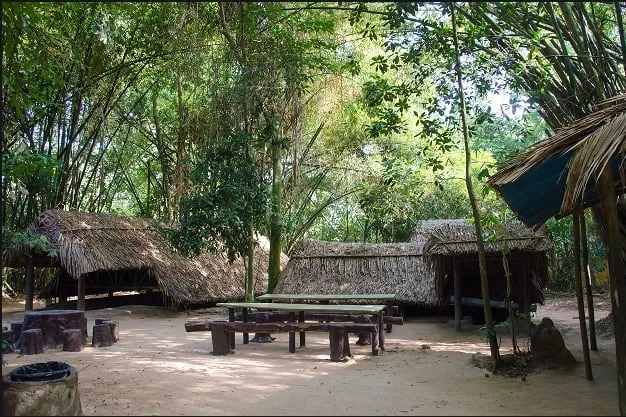Contents
ToggleBest Places to See Elephants in Laos (Ethically)
Elephants are a symbol of Lao heritage and spirituality—but unfortunately, many have suffered through tourism and logging. Thankfully, several sanctuaries now focus on ethical, non-exploitative experiences. Here are the top places where you can see elephants responsibly in Laos:
- MandaLao Elephant Conservation – Luang Prabang
- ✅ Riding: No
- ✅ Feeding: Yes
- ✅ Bathing: No
- ✅ Touching: No
Just outside Luang Prabang on the banks of the Nam Khan River, MandaLao is a leading model of ethical elephant tourism. This sanctuary offers a chance to walk alongside elephants in a natural forest setting—no riding, no tricks.
With over 80 hectares of protected land, the center rescues elephants retired from logging and focuses on education, conservation, and animal welfare. Visitors can feed the elephants and observe their social behavior in peace.
🧭 Perfect for those seeking mindful, close-to-nature interactions without disrupting elephant behavior.
- Elephant Conservation Center (ECC) – Sayaboury
- ✅ Riding: No
- ✅ Feeding: No
- ✅ Bathing: No
- ✅ Touching: No
Located in the forested hills of Sayaboury Province, the ECC is a rewilding and rehabilitation center, not a tourist attraction. With over 530 hectares of habitat, it provides sanctuary to 34 elephants, many of whom are being prepared for release into the wild.
Visitors stay in eco-lodges and engage in educational programs about elephant biology, forest ecology, and conservation challenges. Direct interaction is intentionally limited to ensure minimal stress and maximum freedom for the animals.
🌱 Ideal for conservation-minded travelers interested in deep learning over photo ops.
- Mekong Elephant Park – Pakbeng
- ✅ Riding: No
- ✅ Feeding: No
- ✅ Bathing: No
- ✅ Touching: No
Located across the river from Pakbeng village, the Mekong Elephant Park offers a peaceful refuge for elephants rescued from labor-intensive industries. Visitors can quietly observe the elephants as they roam, bathe, forage, and socialize—completely on their own terms.
The park avoids all forms of physical contact and focuses on non-intrusive observation. It also supports local communities through sustainable tourism and educational outreach.
🌿 A great stop for travelers cruising along the Mekong or visiting Pakbeng.
- ✅ Riding: No
- ✅ Feeding: No
- ✅ Bathing: No
- ✅ Touching: No
Across the Mekong from Pakbeng village, this park provides a safe, semi-wild environment for elephants rescued from exploitative labor. The focus is on non-intrusive observation—you can watch the elephants bathe, forage, and interact naturally, without human interference.
The park also supports local communities through sustainable tourism and educational outreach. Programs emphasize the importance of preserving both elephants and their forest habitats.
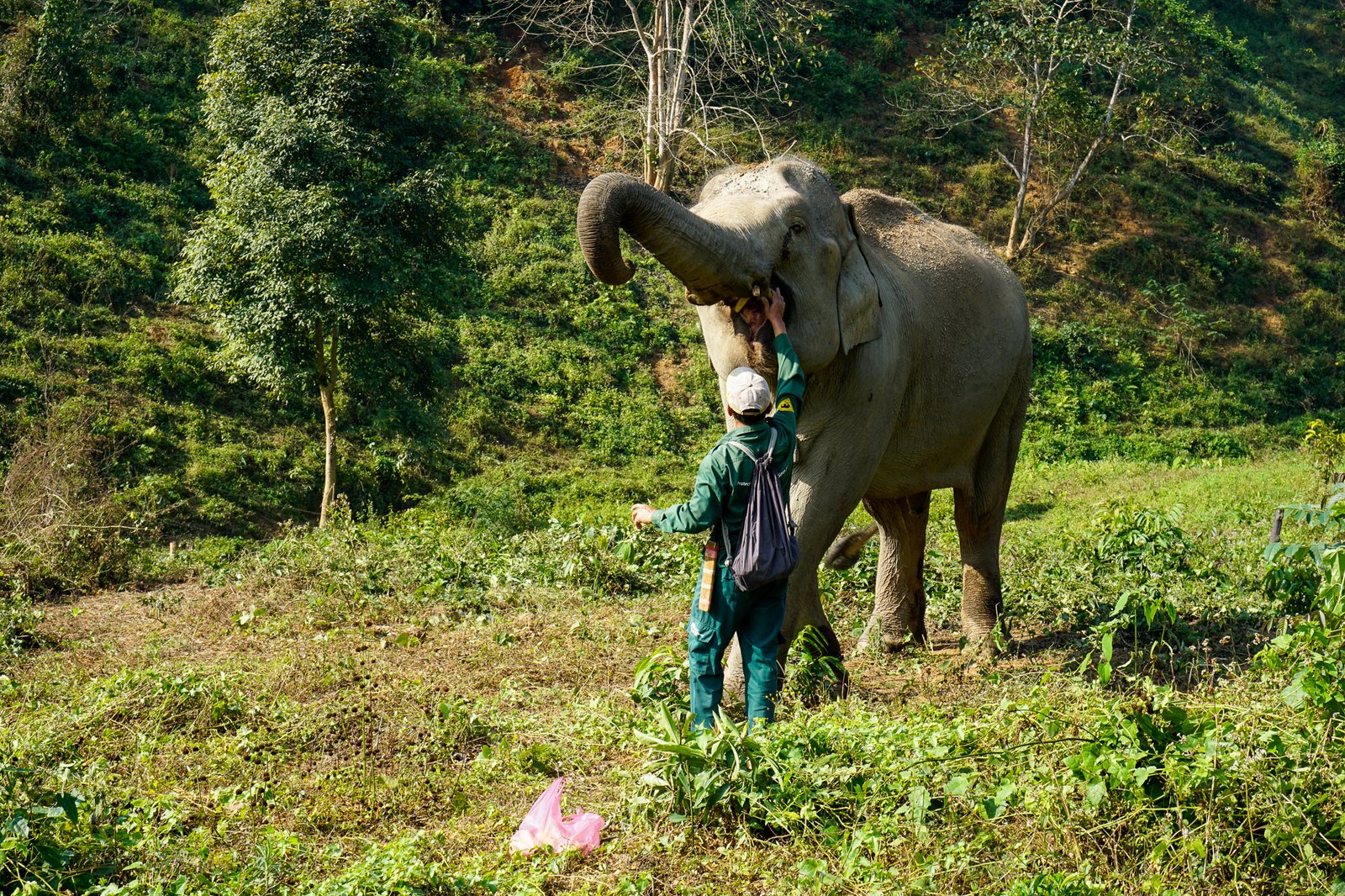
Why Is Laos Called “The Land of a Million Elephants”?
The nickname comes from Lan Xang, the ancient Lao kingdom that ruled from 1354 to 1707. Lan Xang literally translates to “Million Elephants”, a reflection of the animal’s importance in Lao society—both practically and symbolically.
In the past, elephants were used in agriculture, warfare, transport, and even diplomacy. They were once ubiquitous across the region and formed the backbone of the kingdom’s economic, military, and cultural life.
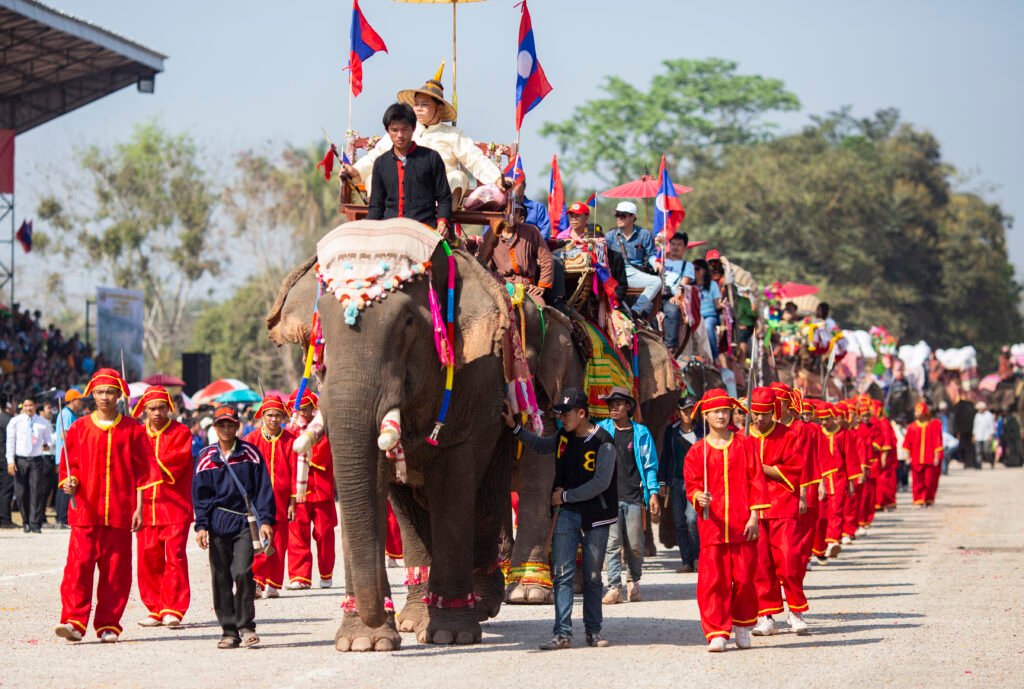
Cultural and Spiritual Significance of Elephants in Laos
🏛 Elephants in Lao History and Identity
For centuries, elephants have been revered as symbols of strength, wisdom, and prosperity. They were royal companions, sacred creatures, and even diplomatic gifts to foreign rulers. Domesticated elephants were often treated as family members—and were once declared the national animal of Laos.
🧘♂️ The Role of Elephants in Buddhism
In Buddhism, elephants—especially white elephants—represent peace, mindfulness, and enlightenment. Their journey from wildness to gentleness symbolizes the path from ignorance to spiritual awakening.
Temples throughout Laos feature elephant motifs, including the mythical three-headed elephant (Erawan). Once depicted on the Lao national flag (until 1975), this powerful symbol represents the three ancient Lao kingdoms—Vientiane, Luang Prabang, and Champasak—as well as the Hindu-Buddhist trinity.
The Current Situation: Threats and Conservation Challenges
Today, the elephant population in Laos is dangerously low. From a symbolic “million,” only 500 to 1,000 elephants remain in the country, according to the World Wildlife Fund (WWF).
⚠️ Key Threats to Elephants in Laos
- Deforestation due to logging, dam construction, and mining
- Habitat fragmentation from development projects (e.g., China’s Belt and Road Initiative)
- Unethical tourism, such as elephant riding and circus-style performances
Fortunately, a growing number of ethical sanctuaries are working to reverse this decline through rescue, rehabilitation, education, and eventual rewilding of captive elephants.
Practical Tips for Visiting Elephant Sanctuaries in Laos
If you’re planning to visit an elephant sanctuary, come prepared to respect both the animals and the environment:
- 👕 Modest clothing (cover shoulders and knees)
- 👟 Comfortable walking shoes
- 🧢 Hat, sunglasses, and biodegradable sunscreen
- 🦟 Eco-friendly insect repellent
- 💧 Reusable water bottle
- 🌧 Light raincoat (during the wet season)
- 🎒 Small daypack
- 🧼 Hand sanitizer and wet wipes
- 🙏 Respectful attitude: be ready to learn and support conservation efforts
A Unique Phenomenon: Elephant Burial Rituals
Did you know elephants perform funeral rituals?
In rare and deeply moving instances, elephant herds have been seen mourning their dead. They may:
- Form a circle around a dying elephant
- Emit low, rumbling sounds
- Cover the body with leaves, soil, or branches
- In some cases, break off the deceased’s tusks, an act still not fully understood by scientists
These behaviors highlight the emotional depth, intelligence, and strong social bonds of elephants—further reinforcing the need to protect them with empathy and care.
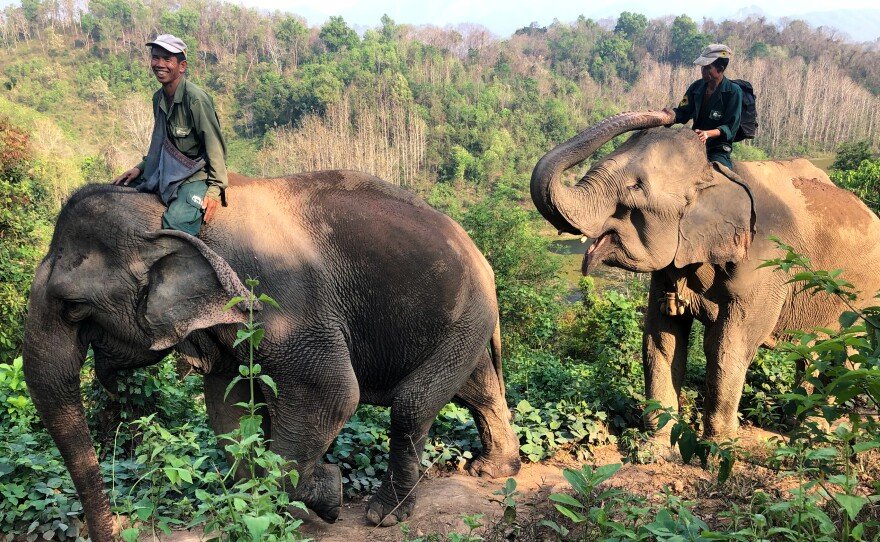
Final Thoughts
Elephants are more than just animals in Laos—they are sacred beings, cultural icons, and national treasures. While their numbers are dwindling, efforts by conservation centers and sanctuaries offer hope for their survival.
Visiting one of these ethical sanctuaries not only gives you an unforgettable experience, but also helps support the protection and dignity of these majestic creatures. If you’re planning a trip to Laos, make time to witness the spirit of the “Land of a Million Elephants”—with respect, awe, and compassion.












